By Léa Charette
Highlight of Article:
This article is a narration of a school field trip to Taoyuan. The article’s content consists of both my personal experience embellished by other participants’ personal accounts. The trip as a whole was a remarkable example of cultural learning and intercultural dialogue.
I was surprised to see that the tour bus was full. What I had thought would be a field trip with our 8-students Tibetan Anthropology class, plus our teacher turned out to be of much larger scale. Everyone seemed excited and eager to arrive in Taoyuan. It was an auspicious start to our field trip.
Even though the rainy season had already started, the weather that Saturday was warm and sunny, with just enough wind to make walking around bearable. Upon arriving in the area we would be exploring today, we were split into two groups. In order to clearly hear the tour guide, we were offered earphones that were connected to his microphone.
WHAT YOU NEED TO KNOW ABOUT THE AREA
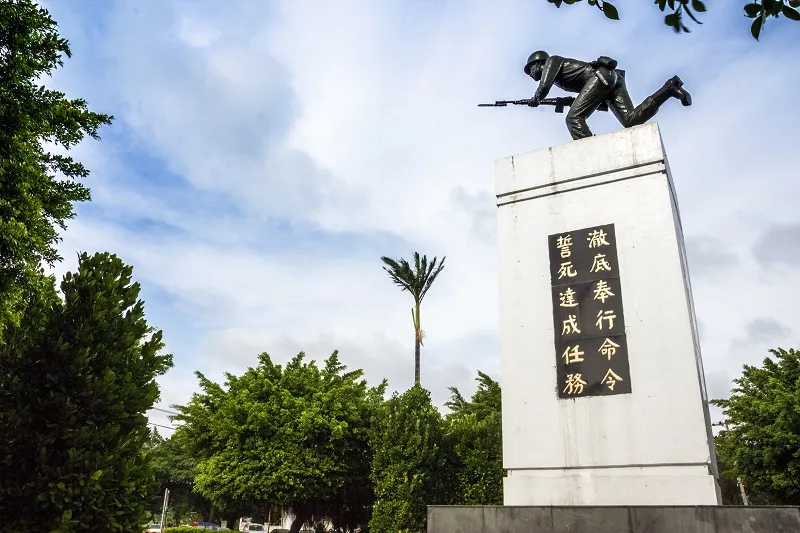
▲Charge Soldier statue at Longgang Roundabout
As we waited, I hid from the sun at the entrance to the junior high school whose parking lot our bus was using. I later learned that behind this school is the R.O.C. Army Academy, the reason why so many ex-military families reside in the Longgang (龍岡) region. This fact, among many others, was provided by my classmate, whose family is from the area, and who kindly offered to translate or clarify information should we find ourselves confused by what the tour guide would say.
Another classmate of mine later confessed to feeling confused by the guide’s explanations. As she is Japanese and in the process of learning Chinese, she thought his “explanations were difficult, because sometimes he explained specific topics such as history and religion”. In the hopes that this article will help her and anyone who wishes to know more about the area, I will briefly expand on its history and religious background.
When the KMT (Kuomintang 國民黨), i.e. the Chinese Nationalist Party “retreated” to Taiwan following its defeat in the Civil War, soldiers - barring those still fighting in the “Golden Triangle” (see third section) - were forced to uproot their lives. They are relocated throughout Taiwan, in different areas now referred to as jyuàn cun (眷村), family villages. Longgang, as a prime example of this cluster of villages, is largely inhabited by retired military officers and their families.
The area is a hub of multicultural activity. To further emphasize the religious diversity of the area, our guide indicated a Baptist church just behind the Longgang Mosque, which we would soon visit, as well as a catholic church. Our unofficial translator also mentioned that there also was a Taoist temp behind the market’s back exit. He stated that “the peace atmosphere between all of [the religious institutions] can be regarded as a sign of inclusion and reconciliation”. He added that, since most residents are relatively recent immigrants to Taïwan, “there’s no reason for them to argue [about each] others’ religion”.
WHAT IS GOING ON IN ZHONGZHEN (忠貞市場) MARKET
The streets of Zhongzhen market are even narrower than that of multiple night markets. We walked single-file, some of the members of the group occasionally stopping to purchase traditional snacks or observe the live seafood in one of the stalls. It was hard to navigate, because, after all, markets are where people gather.
For the uprooted military families I mentioned previously who were no doubt missing their homeland, it was also a way to connect and share their cultural roots. Cuisine from Yunnan province is the most prominent; people come to Longgang to eat mǐ gan (米干), which is similar to Vietnamese phở.
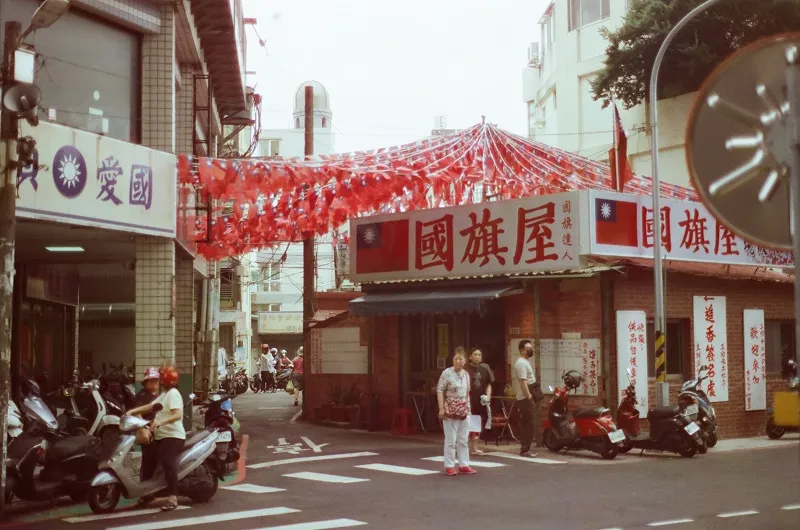
▲A colorful example of Taiwanese patriotism, “The House of the National Flag” (國旗屋) diner, was first opened by a retired army officer
Two of the most popular spots in Zhongzhen market are “The House of the National Flag” diner (guó cí wu 國旗屋) - with its banners full of Taiwanese flags - and any restaurant under the 7 Yunnan (七彩雲南) chain. Among them, my classmate’s favorite is the 版納傣味 (Xishuangbanna, pronounced Banh Na Dai Wei) diner. Its green signboard is situated on the right-hand side, a few steps after entering Zhongzhen market. It serves stone hot pot with a tomato soup base, mǐ gan, tofu, pork, fried pork skin, vegetables and tasty Thai-style side dishes.

▲Walking around Zhongzhen market. Come here for good mǐ gan (米干) and sweet, sour, and spicy dishes!
WHAT WE ATE AND SAW: LONGGANG MOSQUE
If the above description made you hungry, then so will the description and pictures of our field trip meal. At noon, our two groups gathered in Longgang Mosque’s courtyard to celebrate muslim traditions and food. After washing our hands, we sat down to listen to President Ma’s charismatic speech followed by a brief Arabic lesson. Then, we all dug in - literally, as we were encouraged to use our hands after putting on plastic gloves. My Japanese classmate said it was the “first time for [her] to eat something without using chopsticks or cutlery, so it was so interesting!”
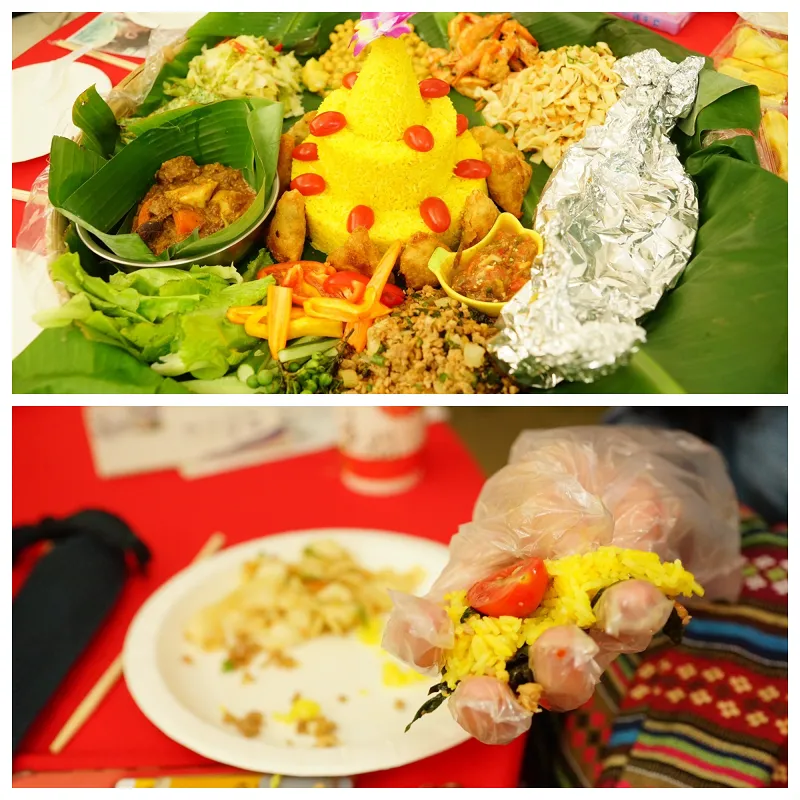
▲The amazing food we ate at Longgang Mosque.
The food was delicious: spicy peas, rice, fish, braised meat, noodles and other dishes I forgot but that were just as excellent. We were deeply grateful for the lovely people who had taken the time to cook all this food for us. On top of that, they offered us traditional snacks and nuts. For dessert, we had fresh watermelon, coconut jelly and a type of radish-like fruit that divided our group into those who liked it and disliked it (like me).

▲Longgang Mosque’s interior, which we were lucky enough to visit.
As we ate, we got to know more about other participants and shared our nationality, culture and life experiences. Some of us were kindly invited to try on muslim clothing. My classmates and I agreed that they all looked amazing! It was heartwarming to be included and welcomed by the community. After lunch, we removed our shoes to enter the mosque. President Ma sat and talked with us. The carpeted floors and vast space lended an intimate atmosphere to our gathering.
WHAT (OR RATHER WHO) IS THE “LOST ARMY”?: A PHYSICAL TRIBUTE
Not far from the mosque, we walked to a cluster of houses around an open space where multiple stalls all had attractive products: welcome to Zhongzhen New Village Cultural Park (忠貞新村文化園區)! In the center of it lies a museum in remembrance to the “Lost Army”. As we entered, our group was given a movie ticket to watch a documentary covering the very interesting history of the “Lost Army” loyal to the Nationalists.
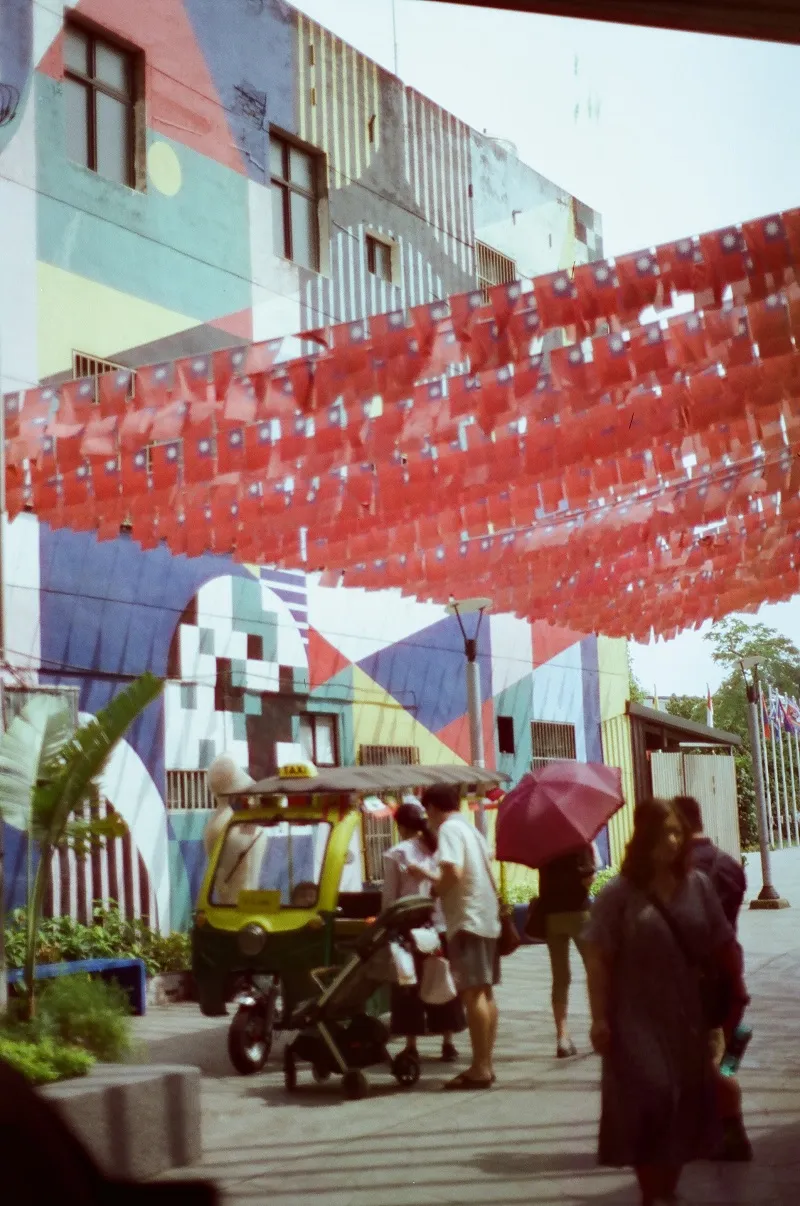
▲The entrance to Zhongzhen New Village Cultural Park (忠貞新村文化園區).
As a Canadian, I had never heard of these soldiers who had stayed behind after the KMT retreat to Taiwan. Forgotten by Kuomintang officials, they had moved due to military offensives from Yunnan province to the “Golden Triangle”, a mountainous region at the junction of Laos, Thailand and Myanmar where the Ruak and Mekong rivers converge.
In the jungle, they continued to fight for the KMT until their eventual repatriation to Taiwan or Mainland China in 1953-54. Those who came to Taiwan were placed in “忠貞”, the Zhongzhen New Villages. The Chinese characters, taken individually, each mean “Loyalty”, a tribute to the neverending efforts of the forgotten troops. As my classmate said, the “Lost Army Story House” museum was erected “in the hope that people nowadays will realize how cruel and tough the war was compared to how patriotic they [the soldiers]” remained.
FIELD TRIP WRAP-UP: AN HISTORICAL AND CULTURAL EXPERIENCE
As we tiredly made our way to the waiting bus under the soft rays of the sunset, I could not help but feel that this was a day well spent. When I asked my fellow Canadian classmate for his impressions, he told me that he “thought that the places we went to were really neat”. Plus, he “found it most interesting to learn about the historical origins of the area”. As for my Japanese classmate, she said to have “enjoyed the food and place of Taoyuan” and “also felt [that] all people [she had] met during the trip were so friendly!”.
In keeping with my classmate’s positive feedback, I wholeheartedly agreed that we all became more knowledgeable as well as lucky to have encountered amazing people from a diversity of backgrounds. This had truly been an amazing opportunity for learning more about different cultures and exchanging interesting information, all the while eating good food!
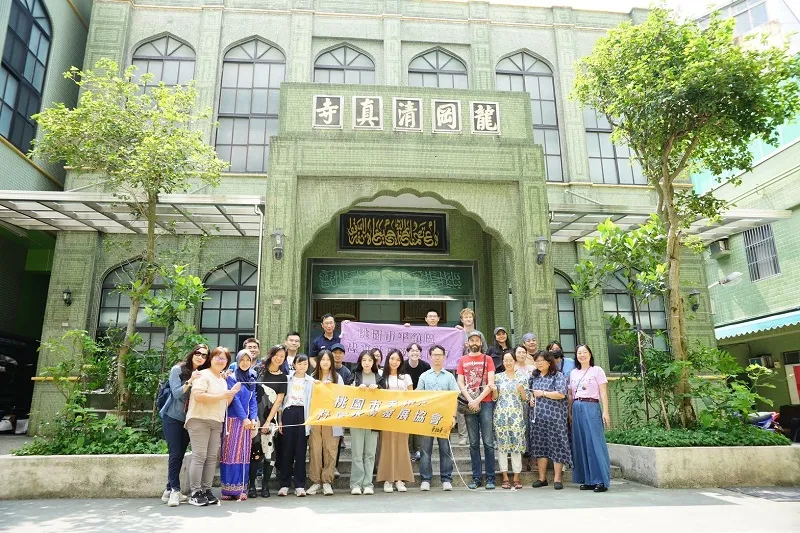
▲A mandatory group picture in front of the all-green facade of the Longgang Mosque,
holding the banners commemorating our trip. What a day!
Photo credit: Léa Charette & 陳乃華.